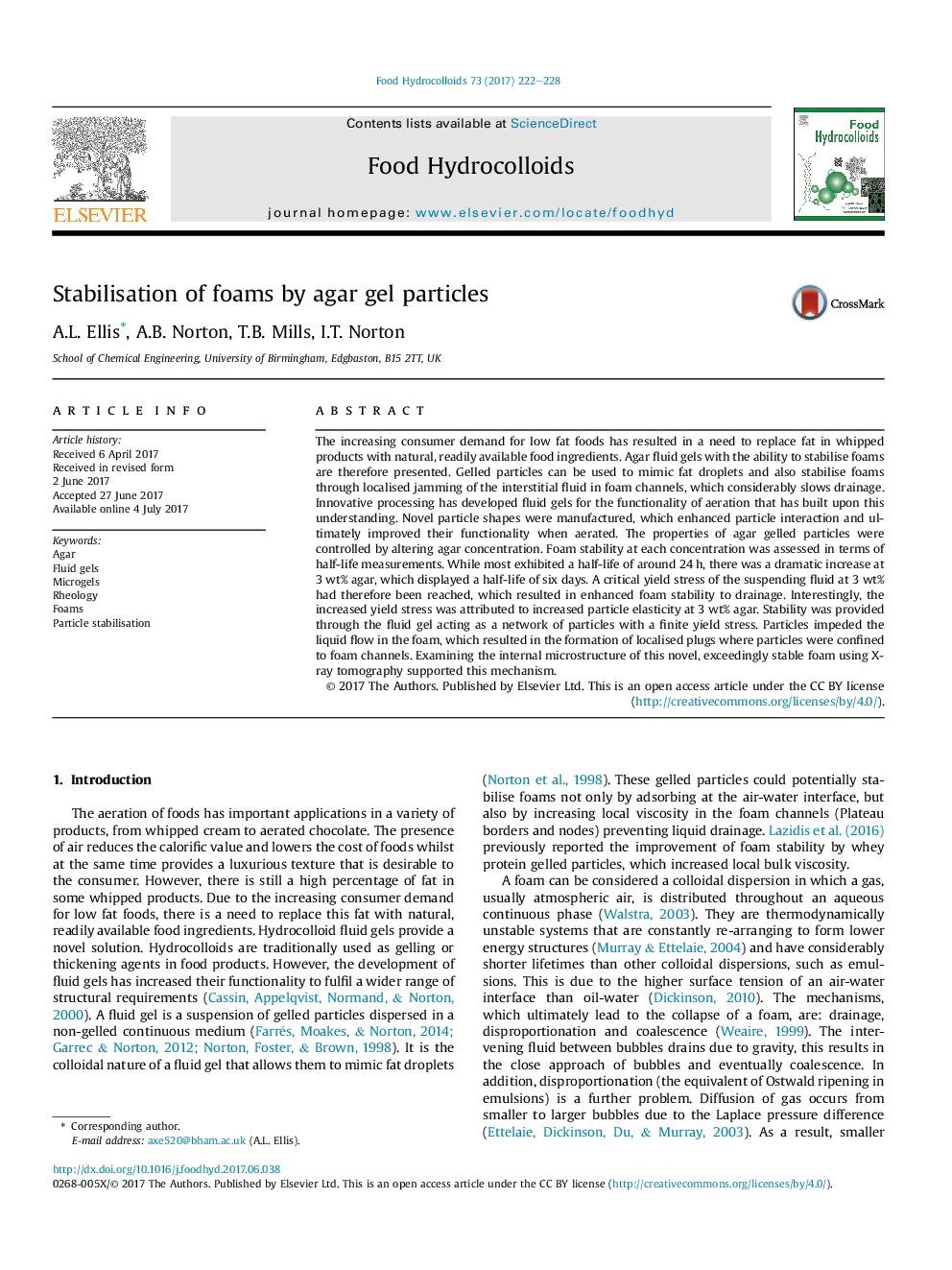| Article ID | Journal | Published Year | Pages | File Type |
|---|---|---|---|---|
| 4983827 | Food Hydrocolloids | 2017 | 7 Pages |
â¢Agar fluid gels with the ability to stabilise foams have been developed.â¢Processing was manipulated to produce particles of novel, desirable shapes.â¢Very stable foams were produced at various agar concentrations.â¢A mechanism of stability was proposed where agar particles “plug” plateau borders.â¢Foam stability was influenced by the microrheology of the systems.
The increasing consumer demand for low fat foods has resulted in a need to replace fat in whipped products with natural, readily available food ingredients. Agar fluid gels with the ability to stabilise foams are therefore presented. Gelled particles can be used to mimic fat droplets and also stabilise foams through localised jamming of the interstitial fluid in foam channels, which considerably slows drainage. Innovative processing has developed fluid gels for the functionality of aeration that has built upon this understanding. Novel particle shapes were manufactured, which enhanced particle interaction and ultimately improved their functionality when aerated. The properties of agar gelled particles were controlled by altering agar concentration. Foam stability at each concentration was assessed in terms of half-life measurements. While most exhibited a half-life of around 24Â h, there was a dramatic increase at 3Â wt% agar, which displayed a half-life of six days. A critical yield stress of the suspending fluid at 3Â wt% had therefore been reached, which resulted in enhanced foam stability to drainage. Interestingly, the increased yield stress was attributed to increased particle elasticity at 3Â wt% agar. Stability was provided through the fluid gel acting as a network of particles with a finite yield stress. Particles impeded the liquid flow in the foam, which resulted in the formation of localised plugs where particles were confined to foam channels. Examining the internal microstructure of this novel, exceedingly stable foam using X-ray tomography supported this mechanism.
Graphical abstractDownload high-res image (195KB)Download full-size image
